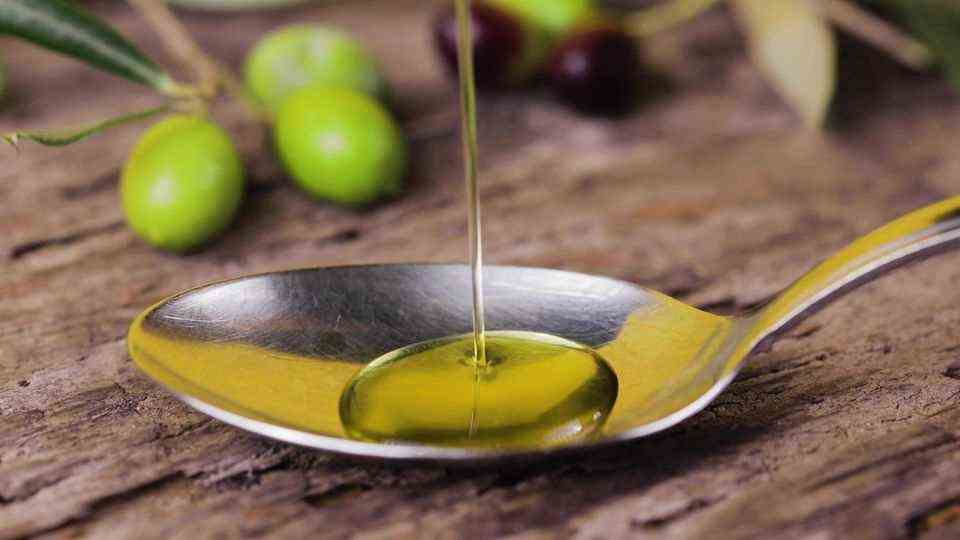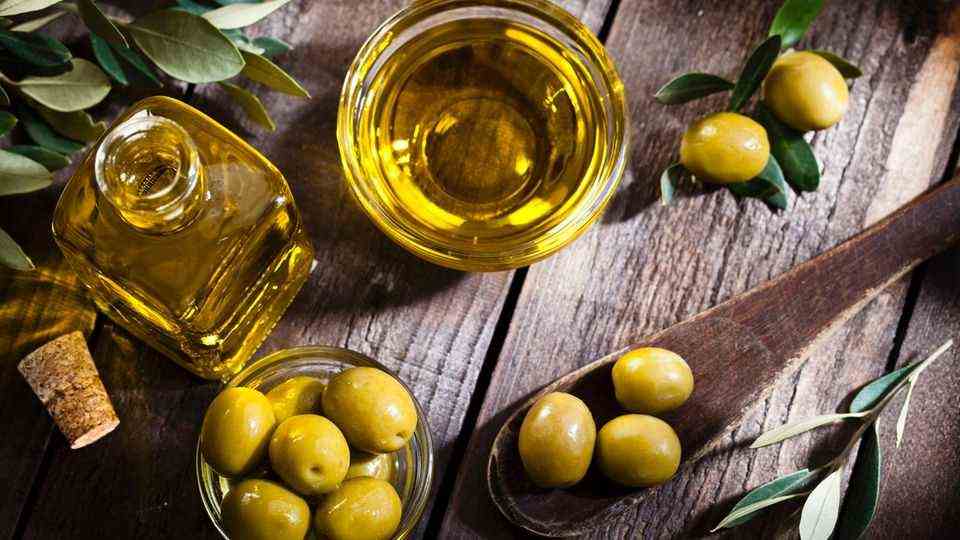Quality check
Stiftung Warentest tests olive oils and lets Alnatura rattle through it mercilessly
Bitter, hot, fruity – this is how a “virgin olive oil” should taste at best.
© fcafotodigital / Getty Images
Olive oil has a deal for excellence. But there are also providers that you should keep your hands off of. Stiftung Warentest has found two of them.
Olive oil is one of the most exciting edible oils. It is healthy and also boasts a diverse aroma that is unique among vegetable oils. A good “virgin olive oil” tastes bitter, hot and fruity at the same time – and is a must-have in every well-stocked kitchen. The only thing is that not everything that says olive oil has a high-quality product in it. Stiftung Warentest tested 27 olive oils; two branded products were so negative that they failed.
On the whole, the testers gave the oils a good rating. “We haven’t been able to recommend so many olive oils for a long time,” they write. More than half of the products tested, 15 out of 27, scored solidly with “good”. But two products were particularly enthusiastic, “outperform” the competition, especially when it comes to taste, and the chemical quality is also top-notch. Unfortunately, so is the price.
Extra expensive, extra plasticizer
If you want to buy one of the top rated olive oils, you have to be ready to dig deep into your wallet. The two test winners, both with a grade of 1.8, have their quality paid for. The Spanish organic oil species-appropriate Phenolio costs 48 euros per liter, the Italian Selezione Gustini Antico Frantoio della Fattoria is available for a mere 40 euros. The Oil & Vinegar from Nocellara (52 euros) is even more expensive. However, consumers can save themselves the purchase. Because the luxury product comes with an unsavory extra: plasticizer.
According to the test results, plasticizers are standard in olive oils. The testers could find these in all products. But mostly in small to very small quantities that are harmless to health. Only the oil from Nocellara was “very high” contaminated with the plasticizer DEHP according to the product test. There is no acute danger from this, but such values are avoidable. The oil does not exist in the categories of chemical quality and pollutants. The bottom line is that Stiftung Warentest judges: “poor” and gives it the second worst rating.
Good brand image, but “rancid” taste
Only one of the oils was therefore worse. Ironically, the product from the organic supermarket Alnatura crashed through the quality check. For the low price of 7 euros per liter, the company promises “extra virgin” olive oil, that is, oil of the highest quality. A bargain actually. But unfortunately the provider does not keep what it promises. Instead of a harmonious interplay of flavors, the oil tasted rancid, according to testers. This happens when oil is either old or has been exposed to light or oxygen for too long. Such taste errors are not allowed in this quality class. With a grade of 5.0, Warentest punishes olive oil as the worst in comparison.
Other cheap providers from the supermarket or discount store do better. They can’t quite keep up with the test winners, but they make up for it with the price. Lidl’s prima donna costs just 5.35 per liter, making it one of the cheapest in the check, and an example of the fact that quality does not have to be expensive. The olive oil is one of the best oils with a grade of 2.3 and also offers the best price-performance ratio.

This is how you recognize good olive oil
With a little practice, laypeople can recognize quality differences in olive oil even without a laboratory. If you want to test whether the olive oil is any good on the shelf, you should consider three tasting steps. give for initially a little oil in a wine or grappa glass. Cover this and warm it up with your hands. Then, as is done, for example, at wine tastings, the nose is inserted.
“A good olive oil should smell as intense and harmonious as possible,” write the testers. Depending on the harvest time, it smells green and fruity or sweetish and ripe. The third step is about taste. The taste should be balanced, “bitter or sharp impressions should not be superimposed on fruity notes”. In the taste test, it is important that bitterness and sharpness are a characteristic of freshness and not a flaw. The longer an olive oil is stored, the more these flavors fade. The color of the oil is not a sign of quality, by the way.
You can do the complete olive oil check on test.deread for a fee.



